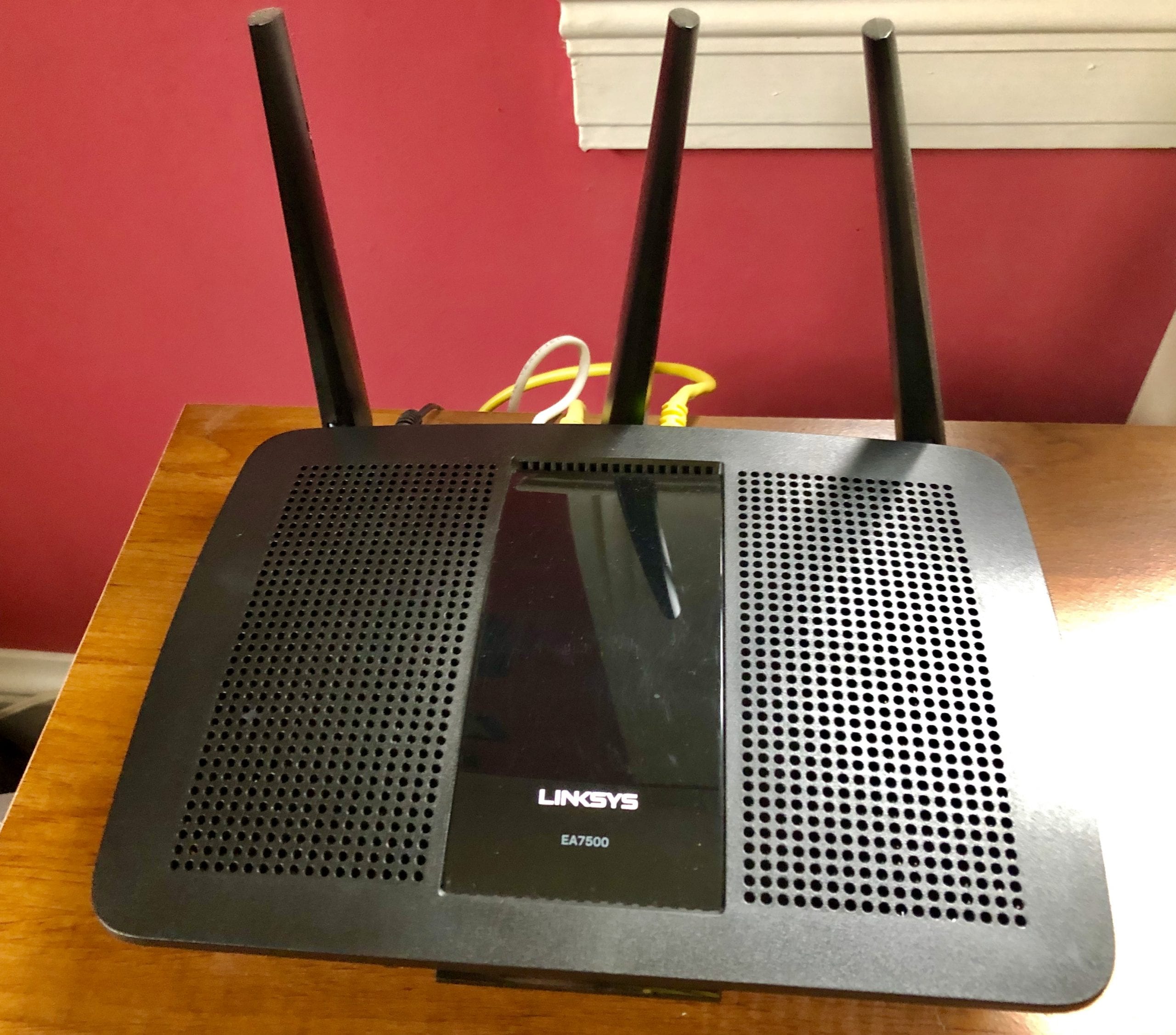Internet Capacity Fine, but Access, Cost Remain Challenges

Audio By Carbonatix

Linksys EA7500 wireless router. Photo credit: Ronni Newton
In West Hartford, internet providers include Comcast and Frontier, as well as GoNetspeed, a recent arrival on the scene which offers service on a fiberoptic network for rates beginning at $50 per month for 150 Mbps.
By Steve Jensen, CTNewsJunkie.com
Even with a sharp increase in demand due to a surge in online meetings and virtual classes in the midst of the COVID-19 pandemic, Connecticut’s major internet providers say they are having no issues with bandwidth or capacity. Whether consumers can afford the service they now must depend on for education and employment, however, can vary.
“Despite significant traffic increases, our network is performing very well overall and meeting the needs of remote workers and students learning from home,” said Jeff Lavery, spokesman for Cox Communications. “If we see the network reach or exceed utilization thresholds, we will accelerate network upgrade plans in the impacted areas.”
Other major providers such as Comcast and Frontier also say they have not experienced any significant service problems.
“During COVID-19, network traffic spiked more than 30 percent as people rapidly transitioned to working and learning from home,” Comcast spokeswoman Kristen Roberts said. “Comcast’s network continued to deliver fast speeds, even under the heaviest usage, and even in the areas most severely affected by COVID-19.”
That 30% increase in demand closely mirrors the national trend, according to the NCTA, the principal trade association for the U.S. cable industry.
BroadbandNow, a website that helps consumers find and compare internet service providers, says Connecticut overall has the 10th-best broadband internet connection and download speed in the nation.
While more than 90% of state residents have access to high-speed internet, there are thousands of residents who do not. According to BroadbandNow, about 7,000 residents do not have any wired internet providers offering services where they live. About 32,000 residents lack access to high-speed broadband internet. Another 165,000 residents have access to only one wired provider, leaving them no competitive options to switch.
Those underserved areas of the state are mainly concentrated in the Northwest and Northeast corners, said Burt Cohen, broadband policy coordinator in the state’s Office of Consumer Counsel.
Cohen noted that affordability can be an issue for low-income families and those with particularly high internet needs. He suggested the example of a family with three school-age children engaging in remote learning while their parents are working from home via video conferencing and downloading and uploading documents throughout the day.
“Their broadband speed requirements will far exceed what a single person working from home will need,” Cohen said. “That higher speed, if available, will come at a higher monthly cost.”
Most major state providers like Comcast and Cox have low-income options, he said, but some come with conditions and usually a lower download and upload speed.
BroadbandNow says only about a third of state residents have access to a monthly internet plan costing $60 or less. That is more than 20% lower than the national average of 51.5% of residents who have a low-priced internet plan available to them.
In late July, Gov. Ned Lamont launched the Everybody Learns initiative, a $43.5 million program to obtain 50,000 laptops for students, fund a year of access to at-home internet for 60,000 students, and create free public hotspots at 200 community sites across the state. Many of the state’s major providers have agreed to participate in the program.
Funding comes from the state’s portion of the federal CARES Act, the Governor’s Emergency Education Relief Fund, and the Elementary and Secondary School Emergency Relief Fund.
BroadbandNow noted Connecticut’s access-equality issue in an update on its website this month.
“For the most part, Connecticut’s population has fairly equal access to high-speed internet,” it said. “However, a digital divide remains between those who have access to a fast, low-priced wired connection and those who do not.”
Republished with permission from CTNewsJunkie.com, all rights reserved.
Like what you see here? Click here to subscribe to We-Ha’s newsletter so you’ll always be in the know about what’s happening in West Hartford! Click the blue button below to become a supporter of We-Ha.com and our efforts to continue producing quality journalism.



